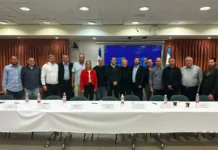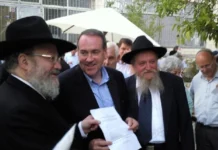As the historic center of Judaism and a spiritual anchor for Jews around the world, the city of Jerusalem is a highly symbolic place. Its significance is embodied in expressions like “Next year in Jerusalem,” said every year at the conclusion of Passover and High Holy observances across the world.
“They were always in some kind of awe whenever they said ‘yerushalayim.’”
For composer Meyer Kupferman, hearing his parents and relatives say the word “yerushalayim” was one of the more salient indices of Jewishness he experienced as a child. “I kept hearing this word, ‘yerushalayim,’ ‘yerushalayim.’ I didn’t know what the heck it meant. And they were always in some kind of awe whenever they said ‘yerushalayim.’”
As an adult, Kupferman turned to poetry to help cope with his feelings surrounding the Holocaust. He composed a poem titled The Shadows of Jerusalem, about which he stated the following during a 1998 interview with the Milken Archive:
I thought about a lot of things pertaining to philosophy, to theology, and images since my childhood. How important it was to my mother to light the candles. And there is a reference of the, the candle-lighting there, and the idea of being called to be a part of a minyan, even if you didn’t want to be, you know, and, and the idea of the ten required. And, and I remember, when I was child, I had to read about the, protecting the scrolls, and the image of the scrolls having gone, like people have gone, through terrible times. That the scrolls themselves were damaged by either fire or time or God knows what, you know. So, all of these images played in my mind, and they came out into the poem.
In 1992, Kupferman turned his poem into a chamber work for mezzo-soprano and a trio of clarinet, cello, and piano. At fourteen minutes long the piece is much more than a poem setting. In fact, the voice plays a quasi-instrumental role, with many extended melismas. But the text is crucial, and the symbolic nature of Jerusalem plays a key role in the piece’s Jewish connection. The line “And we were touched forever by the tears and shadows, the shadows of Jerusalem” appears twice, near the beginning and as the poems’ closing line. An Eastern European folk flavor pervades much of the melodic design.


























